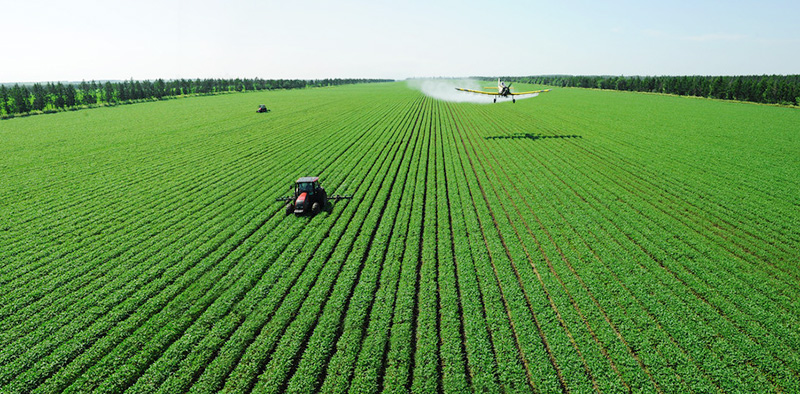Agriculture plays a pivotal role in the development of world civilization, and this is especially true for Chinese civilization. We have long been able to learn about the “emphasis on agriculture and suppression of commerce” from history textbooks and understand the importance attached to agriculture by rulers of past dynasties.


But today, with the improvement of social productivity and the growth of grain production, the types of commodities are becoming more and more abundant. For agriculture, the seller’s market has gradually transformed into a buyer’s market. Unsaleable agricultural products often occur. Innovative development of agriculture Facing a huge test.
Growth in food demand: As the global population increases and quality requirements improve, food demand is also rising.
Decreasing number of experts: Profitability and industry attractiveness are both low, resulting in a shrinking number of experts on which the industry can rely.
Low efficiency: The cultivation of traditional grains, vegetables, fruits, etc., as well as the breeding of livestock, all face problems of low efficiency, lack of market circulation, and insufficient information openness.
High-yield risks: Sowing and harvesting, birth and slaughter, time cycles like this, and increasing climate change are all bringing great uncertainty to the future profits of agricultural products.
Today, farmers are no longer a status symbol, but an equal profession. And this oldest industry in the history of civilization is combining with technology to explode with greater vitality.
Precision agriculture is one of the most well-known applications of the Internet of Things in agriculture, suitable for large-area crop cultivation. Today we will first use it to understand the application of the Internet of Things in agriculture.
In essence, the concept of precision agriculture can be summarized into three levels: data collection, analysis and application.
1. Collection of agricultural data
Sensor collection of data is another way that we can easily think of. Deploy a large number of sensors in farmland to obtain environmental parameters automatically and in real time. However, there are many types of parameters that need to be detected for crop planting. It is difficult to present the overall appearance of farmland with the single point data obtained by the sensor.
So also talk about drones. UAVs collect multispectral, thermal and visual images during flight. These image information are processed to show crop monitoring, field analysis, land imaging, mapping and other results.
Intelligent machinery and equipment used to harvest crops are equipped with GPS systems and yield monitors. They collect geographical location information while harvesting crops and use data to reveal yield changes in each area of the farmland.
Combining these methods, farmers can obtain various parameters of current farmland, analyze the data and take corresponding measures.
2. 3S technology
3S refers to RS, GPS, and GIS.
RS is remote sensing, which does not touch the object itself. It uses sensors to collect electromagnetic wave information of the target object, and then identifies the target object after processing and analysis. Its function is to provide basic information of the image.
GPS is the global positioning system, which is used to determine image location information.
GIS is a geographical information system. The processed images are entered into GIS and can be used for subsequent data management and application analysis.
In agricultural scenarios, the GIS system is introduced into intelligent agricultural machinery. During operation, the GPS system will match the real-time operating status of the machinery with the GIS information. This can greatly improve efficiency and achieve more efficient operation paths and more accurate Sowing and irrigation. This is also a technology used very frequently in agriculture.
3. Variable rate technology – VRT technology
Variable rate technology (VRT) allows farmers to optimize inputs into every part of the field, planting different types and quantities of seeds where and when needed, and placing the right amounts of fertilizers and pesticides.
This technology needs to be deployed in mechanical equipment and coordinated with GIS when applied. But at present, the cost of VRT is very high, and the adoption rate is relatively low.
The precision agriculture we talked about above is suitable for large-area crop cultivation, and the system is relatively complex, and the cost of a system is relatively high. However, the subsequent benefits will be greater than the investment costs. The larger the planting area, the faster the cost will be recovered.
Other applications of IoT in agriculture
For example, the breeding of poultry and livestock can be divided into three levels:
1. Monitor the vital signs of animals through sensors to ensure that there is no disease;
2. In some cases of wide-area grazing, use position sensors or GPS to assist in tracking the location of cattle, sheep and other animals to reduce loss and improve management efficiency;
3. Through sensor data monitoring, more accurately predict and schedule milking time and slaughter date to maximize production.
The future development of agricultural Internet of Things
The key to the development of the agricultural Internet of Things is efficiency. We can look at it from two aspects:
1. Improve agricultural production efficiency and diversify production, distinguishing agricultural products from low-margin commodities;
2. If necessary, modern development thinking methods such as “brand building, premium increase, refined operation, and Internet service-oriented” can also be added.
Using technology to improve efficiency and using channels to build markets, agriculture, as an important industry, will continue to develop and advance with the support of Internet of Things technology.